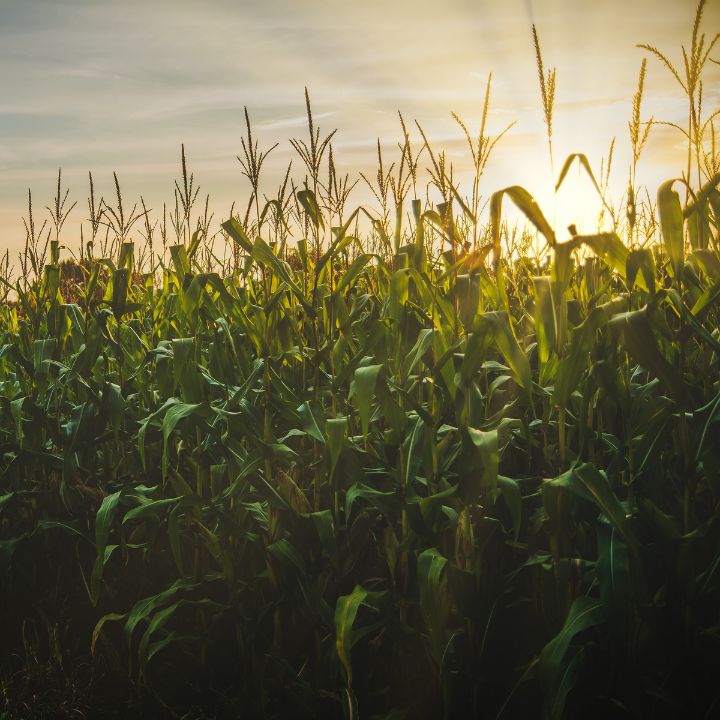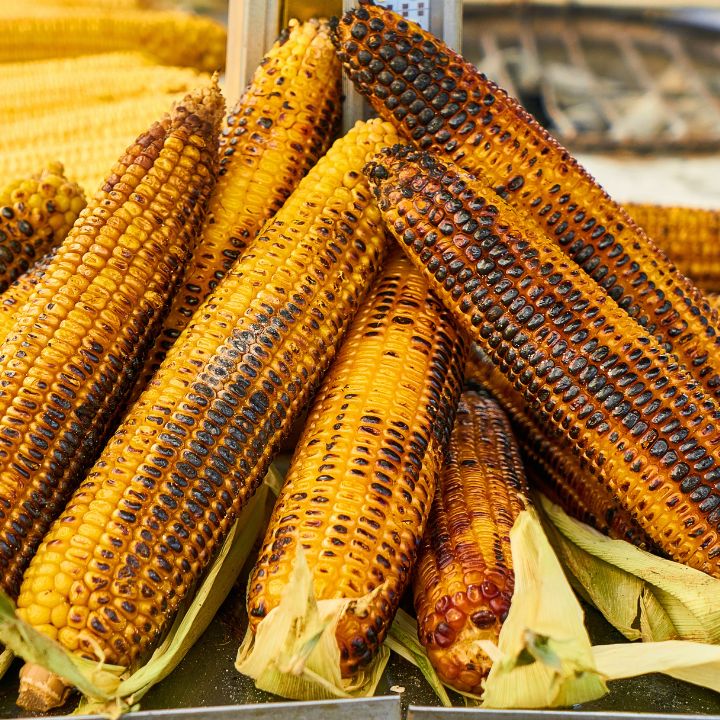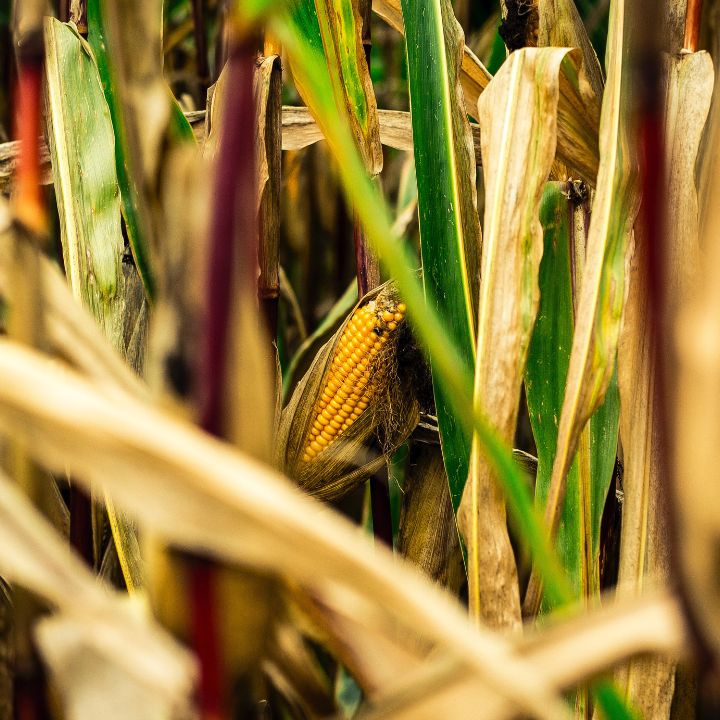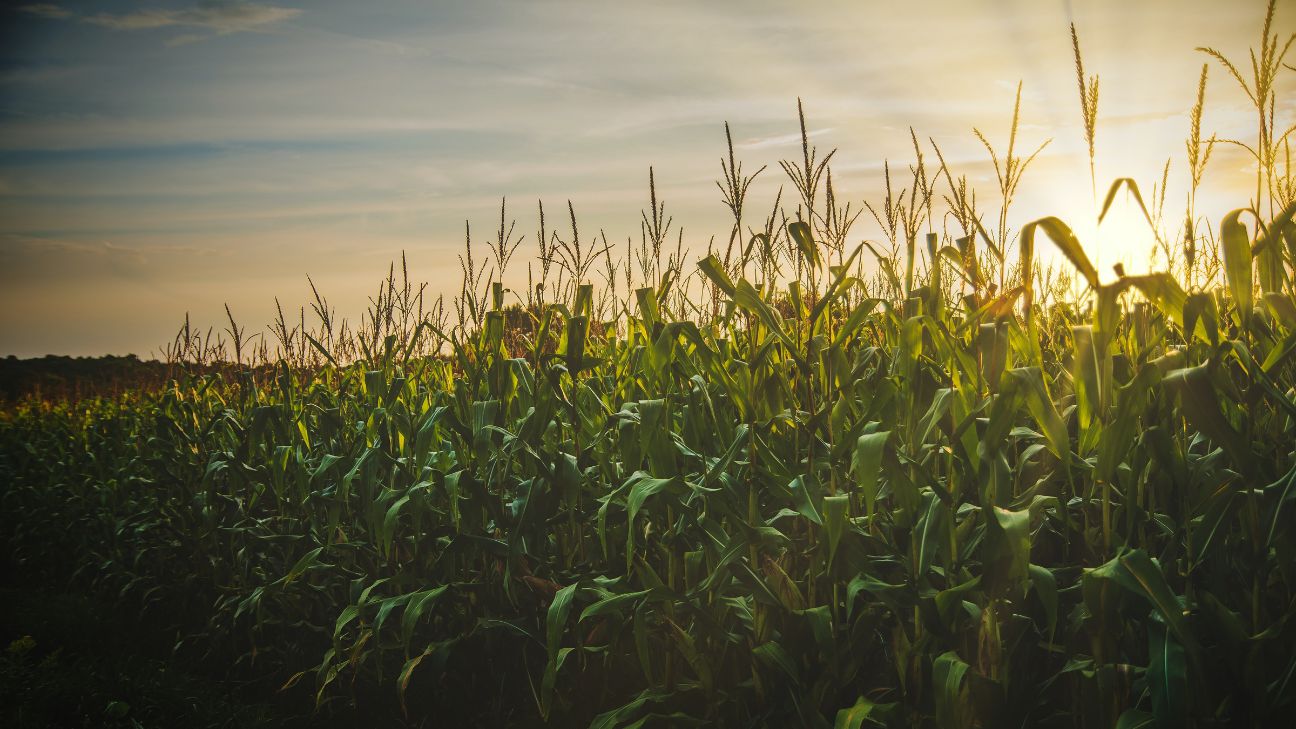Corn
Zea mays
Learn how to care for corn along with its history and classification details.

Hardiness Zone: 3-11
Soil Type: Slightly acidic to neutral
Sun Exposure: Full sun
Annual or Perennial: Annual
Type: Vegetable
History: Maize, also known as corn, is a cereal grain first domesticated by indigenous peoples in southern Mexico about 10,000 years ago. The leafy stalk of the plant produces pollen inflorescences and separate ovuliferous inflorescences called ears that when fertilized yield kernels or seeds, which are fruits. Corn is the third largest plant-based food source in the world. Despite its importance as a major food in many parts of the world, corn is inferior to other cereals in nutritional value. Its protein is of poor quality, and it is deficient in niacin. Diets in which it predominates often result in pellagra (niacin-deficiency disease). Corn is high in dietary fibre and rich in antioxidants.
Corn is known to symbolize fertility, prosperity, and joy. While the syrup form it is now as sweetness and death.

How to Care for Corn
Common questions and details on how to care for corn.
How do I plant corn?
Plant seeds about 1.5 to 2 inches deep and up to 4-6 feet apart. Cover the seed with soil. If you’re planting rows, keep them 30 to 36 inches apart. Water seeds after planting.You should not need to help the corn stalks with stakes as the stalks are rather sturdy.
When is the best time to plant?
The best time to plant corn is late April to early May.
How do I propagate corn?
To propagate corn make an angled cut at the rooting end of the cane. You will need to dip the cut end into rooting powder and stick it into a pot of pumice, perlite, or coarse sand. You want to stay away from potting soil because the plant will stay too damp and will rot the stem prior to roots being established.
Can I grow corn in a pot?
Yes, you can grow corn in a pot.
How much should I water corn?
Corn likes to be watered 2 inches per square food per week.
How do I care for corn with fertilizer?
Fertilize corn up to 3 times within its growth cycle. Ideally, the schedule would look like fertilizing at planting, 4 weeks, and between 8 to 10 weeks.
When does corn bloom?
Corn will bloom about 60-90 days after planting.
How do I know when corn is ripe?
You can tell when corn is ripe by looking at the tassels at the end of each cob. The tassels should be turning dark brown, which usually happens around week six after tassels appear.
You can also do a fingernail test by peeling back the top of the sheath and firmly inserting a fingernail into the kernel. If a creamy liquid pops out, it’s ready!
When do I harvest corn?
You can harvest corn around 6 weeks after the tassels at the end of the cob appears.
What is the best way to store corn?
It’s best to use corn on the day it is harvested. To keep corn longer, keep it unwashed and unpeeled sealed in a plastic bag in a crisper drawer. It should keep like this for 5 to 7 days.
Is a corn a fruit or a vegetable?
Corn is a vegetable.
Should I plant any companion plants?
Companion plants for corn include: basil, dill, nasturtiums, pole beans, potatoes, pumpkins, radishes, sunflowers, white clover. Avoid cabbage, broccoli, and kale as the corn stalks will continue to grow up and block what sun these plants require.
What are the health benefits of the corn?
Corn is the third largest plant-based food source in the world. Despite its importance as a major food in many parts of the world, corn is inferior to other cereals in nutritional value. Its protein is of poor quality, and it is deficient in niacin. Diets in which it predominates often result in pellagra (niacin-deficiency disease). Corn is high in dietary fibre and rich in antioxidants.
Avocado Corn Salad
This recipe takes some of the best ingredients from your garden. You can’t go wrong with this salad, not just in the summer, but all year long.


A light wind swept over the corn, and all nature laughed in the sunshine.
~Anne Bronte

